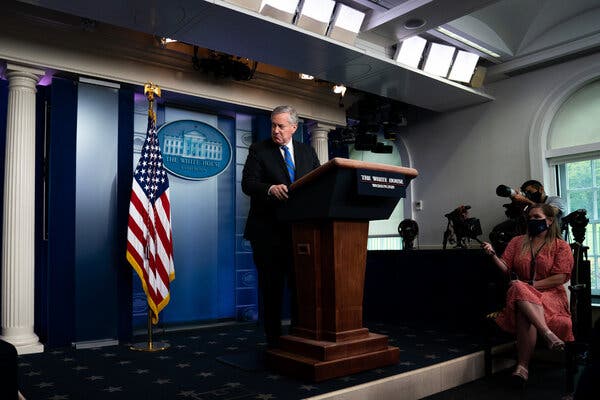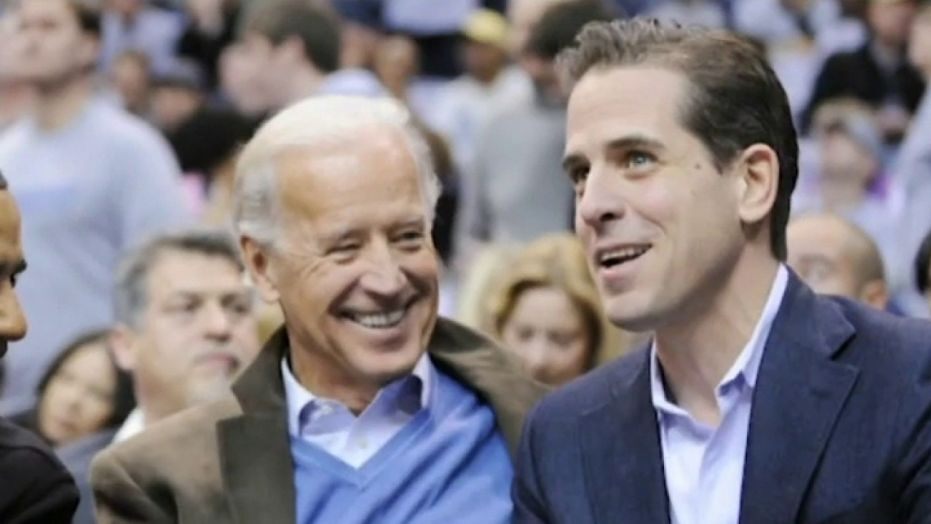The Office of Management and Budget issued new guidance to federal agencies on Friday saying they were “encouraged to maximize telework flexibilities” for at-risk workers as well as those living in areas where there has been community spread of coronavirus.
The OMB guidance came as President Donald Trump on Friday declared a national emergency, freeing up billions of dollars and elevating the role of the Federal Emergency Management Agency to respond to the coronavirus outbreak.
The Department of Defense is set to reduce its on-site workforce by as much as 50% by Monday, a US official tells CNN. Those not on site will be expected to telework, and the Pentagon is considering additional domestic travel restrictions.
“For the next several weeks, coronavirus will be the top priority at the Pentagon,” the official said, adding there are concerns that the growth of the virus could impact readiness.
The decision to have additional people work from home at the largest agency in the government is a sign that the federal government is moving toward more expansive teleworking. It comes as workers at multiple agencies tell CNN that the federal government appears to lack direction on how federal offices should be responding to coronavirus, lagging behind private companies, who have been more proactive about putting teleworking plans in place to limit the potential for the virus to spread.
As the number of cases in the US continues to grow — and the number of people who have come into contract with individuals who have tested positive climbs even faster — there’s growing pressure for a more widespread telework policy across the federal government.
“There is no central leadership, everyone is just making ad-hoc decisions. It is actually terrifying,” said one Treasury Department official.
The Treasury official said that Assistant Secretary David Eisner wrote an email to Treasury employees on Thursday night encouraging them to test telework capability and equipment, but described the email as insufficient in addressing the breadth of employees’ concerns — particularly those who fear they may have come into contact with a coronavirus carrier and want the department to take preventative action.
The Office of Personnel Management issued guidance earlier this month reiterating that telework should be included in the continuity of operations plans each federal agency has for situations like this coronavirus outbreak, although it left the decision on how to use telework to each individual agency.
Some agencies have put in place work from home options only in regions most heavily affected by coronavirus, while others have tried to rotate workers in the office, in what appears to be an effort to curb the potential for the virus to spread while keeping the appearance that the federal government is fully operational.
Senior officials at Treasury have been trying to check in on the workforce every so often, but they don’t have answers to the questions being asked about whether employees still need to come into work or what the protocol is for those who think they have been exposed, the official said.
“They want people to be like normal, as if nothing is going wrong. They are going to wait for people to fall ill before they do something,” the Treasury official said, adding that the guidance at this point has simply been: wash your hands.
Treasury pushed back on the criticism.
“The Administration has taken an aggressive, whole-of-government approach in responding to the coronavirus outbreak. At the Treasury Department, Secretary Mnuchin has established a sub-task force made up of senior leadership to focus on the response,” said a Treasury spokesperson. “Treasury employees have been strongly and repeatedly advised to stay home if they feel ill.”
Treasury has issued a comprehensive resource guide to their employees on the topic. It tells employees to stay home if they tested positive for the virus, are sharing a residence with someone who is quarantined or if they traveled to certain countries and risked exposure, per CDC guidance. But the guide says to “continue working according to your approved work schedule” if employees may have been in contact with someone who was exposed, but not diagnosed, with coronavirus.
The federal workers’ union, the American Federation of Government Employees, has pushed the Office of Personnel Management to immediately allow all federal workers to telework. It sent a letter last week saying “now is the time for OPM to invoke the broadest possible use of telework” in the Washington area, but has yet to receive a response.
Balancing safety with ‘standard operations’
As the outbreak has grown, the Trump administration has placed the focus on showing that the federal government is “working at full capacity,” according to an administration official. The aim is showing that even if teleworking and partial shutdowns occur, it shows that everything is still getting done, the official said, and a sense of normalcy.
That’s particularly true for the military.
“There is sensitivity, especially, to showing that while the military is protecting the health of the force, national security is not suffering,” the official said.
A second official said health was the No. 1 priority, but the military also wants to show that “standard operations,” are being maintained.
Some agencies have taken steps toward widespread telework programs. US Citizenship and Immigration Services said this week that it intends to implement a “nationwide remote work program,” while CISA, the Department of Homeland Security agency responsible for cyber, election and infrastructure security, asked its workforce to telework on Friday to evaluate the capability to work remotely if it becomes necessary.
Offices at DHS headquarters increased telework last week for social distancing purposes. The department is increasing the frequency, but it’s not mandatory yet, a source told CNN. A DHS spokesperson said supervisors were “reviewing work requirements to ensure that telework is used as widely as practicable to ensure the health and safety of DHS employees.”
DHS and other agencies have put telework in place in the biggest coronavirus hotspots in the US. Earlier this month, DHS closed a facility in Washington state after an employee visited a nursing home affected by the virus and subsequently showed up to work before becoming ill.
Both the Social Security Administration and the Environmental Protection Agency, for instance, have both allowed telework for most employees in offices in New York, Seattle and the Bay Area, but not other offices across the country.
“Based on guidance from the Centers for Disease Control and local public health authorities, we will be taking steps to provide mitigation for our offices in heavily affected areas in Seattle, WA, New Rochelle, NY, and Santa Clara County, CA, and we are finalizing changes on several topics, including the expanded use of telework to continue service during this difficult time,” Commissioner Andrew Saul wrote to Social Security Administration employees on Thursday.
For the Department of Veterans Affairs, positive coronavirus cases have already been confirmed at VA facilities in California, Nevada, Louisiana, Washington state and Colorado. The VA has been preparing for the possibility that it may be forced to revert to its pandemic contingency plans, which include increasing telework for employees across the country. In some regions, VA has conducted stress tests on its teleworking networks in recent days in order to ensure these systems can endure a significant increase in volume should employees have to work remotely, according to a regional VA official and emails reviewed by CNN.
VA has ordered increased screening for all patients and staff entering its facilities through a reduced number of entry points. While VA facilities have installed individuals at these entrances to screen all patients and staff entering the buildings, the same VA official told CNN that these screenings are being done by “ambassadors,” who are typically lower level employees without medical training.
VA spokeswoman Christina Mandreucci said the agency was “ensuring our daily operations incorporate as many employees as possible who have been identified as ad hoc telework-eligible and have teleworking capabilities.”
An earlier plan to curb telework
In the nation’s capital, some federal government offices have worked on limiting the number of employees in their offices. Multiple offices at the State Department are now rotating who comes into the office and who teleworks, according to two sources familiar with this plan.
It is a decision being made by individual managers in an effort to make sure that everyone could telework if needed, which State has told them to do. But leadership did not tell them that they had to rotate, and has not told them if there is any immediate plan for nonessential employees to start working from home, the sources said, causing frustration from some State officials about not getting more guidance as to what the plan will be if there is an outbreak in the department or Washington.
The Justice Department sent a letter to employees Thursday evening saying that “supervisors can consider whether individuals who so request may appropriately telework.”
“If others in your work area become exposed, your component management will work to have appropriate alerts and precautions taken, with requisite safeguards for everyone’s privacy,” the Justice Department told its employees.
Some Justice Department employees on Friday sent Attorney General William Barr a letter, saying the federal government “must do more to protect its employees” and imploring the department to allow them to telework because of the outbreak.
The letter, which was obtained by CNN, was sent by Stacey Young and Melanie Krebs-Pilotti, the president and vice president, respectively, of the DOJ Gender Equality Network, an employee-run advocacy organization with more than 550 members within the Department of Justice.
Among other things, the letter points toward a recent incident at the department’s Liberty Square building in Washington, which needed to be cleared out overnight Wednesday after two workers were diagnosed “presumptive positive” for COVID-19, highlighting “how simply coming to work puts us all at risk.”
A Justice Department spokesman on Friday disputed the claims that there were two people who tested positive for the coronavirus, saying the employees in the Liberty Square building “have not received positive tests results for COVID-19 (presumptive positive).”
“There were employees who were symptomatic. As these matters were reported to supervisors, appropriate measures were taken in response in accordance with CDC, OMB, and OPM guidance,” the spokesperson said.
The DOJ Gender Equality Network’s letter says that while the department cleaned select floors of the building, “sanitizing some spaces will not prevent the spread of the virus when non-symptomatic workers return and contaminate them.”
Before the coronavirus pandemic, the Trump administration pushed to curb teleworking in the federal government. Earlier this month, in the early stages of the coronavirus outbreak in the US, the SSA reduced the options for employees to work from home, putting in place a second phase of cuts to the agency’s telework program. In addition to SSA, seven other agencies also reduced their telework policies in the wake of OPM guidelines issued last year.



